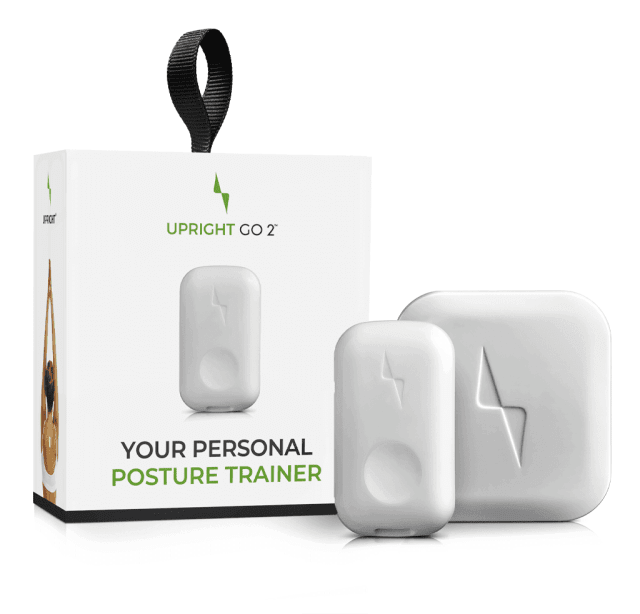5 Tips for Better Travel Posture
Max Frenkel
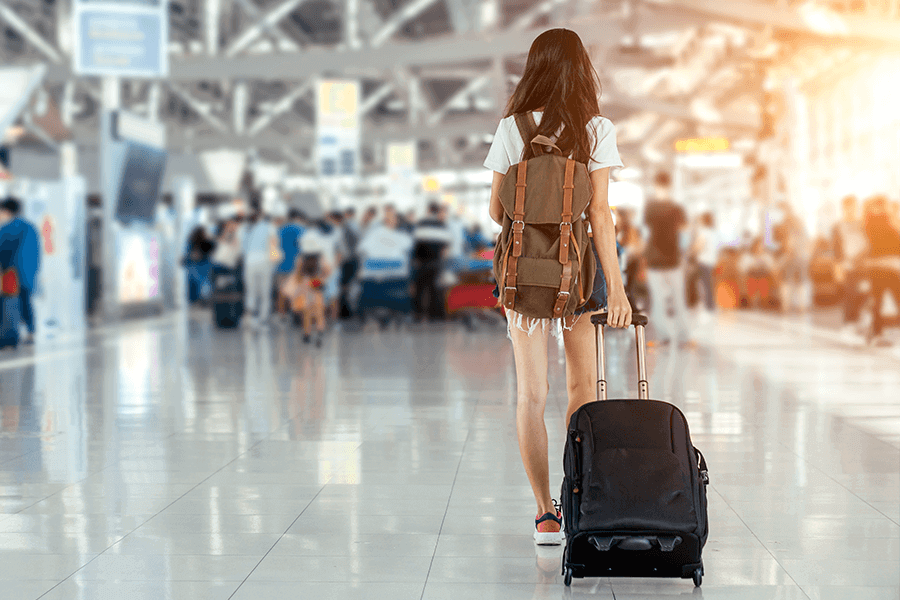
Discover how you can easily improve your travel posture on the fly.
Whether you’re standing in line to board a plane, crammed into an economy seat, or lounging around an airport terminal, posture is usually the farthest thing from your mind. But given how physically stressful traveling can be at the best of times, it’s a wonder we’re not more mindful of the way we hold our bodies.
We’ve all experienced sore shoulders from lugging heavy bags around or woken up from an in-flight nap with a crick in our neck. That’s what happens when we contort our bodies into awkward seating positions for long stretches. Beyond the initial discomfort it causes, poor travel posture can lead to all sorts of long-term health issues and exacerbate pre-existing conditions.
Thankfully, there are practical steps you can take to mitigate the harmful effects of slouching, both in the sky and on the ground.
Your journey to wellness starts with the UPRIGHT GO 2 smart posture trainer.
Leaning on a Jet Plane
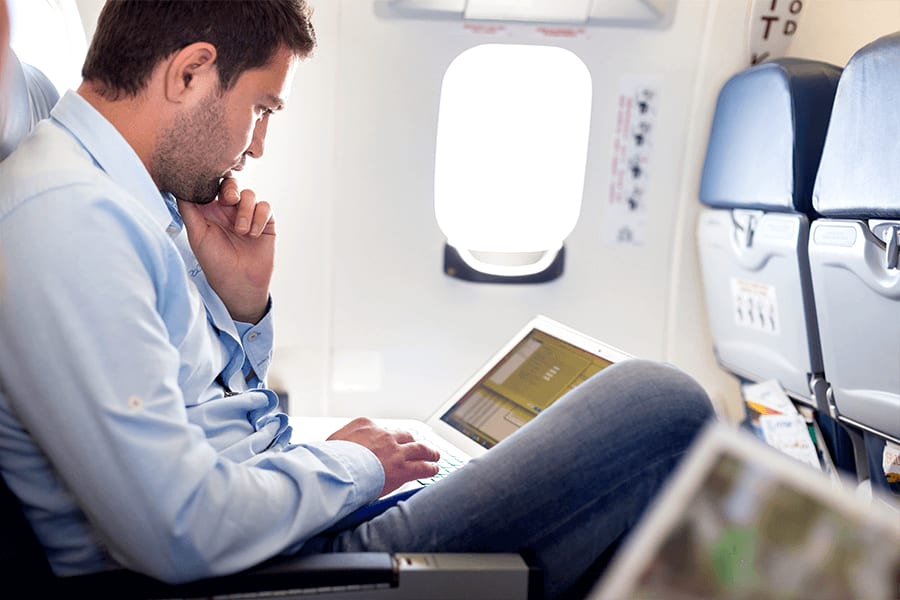
Sitting puts increased pressure on your joints and neck muscles, which can lead to aches and pains. That’s true no matter the length of your journey, but you tend to feel it more on long-haul flights. Most airplane seats are far from ergonomic and do not provide adequate back support, causing your muscles to stiffen up and become painful. It doesn’t help that sitting in the same cramped position for hours restricts blood flow and circulation, depriving your muscles of vital oxygen.
Another posture no-no is standing your smartphone or tablet on the tray table in front of you or resting it on your lap. In both cases, your head is in an unnatural, downward position that puts a great deal of pressure on your spine. Being thousands of feet up in the air doesn’t exempt you from the laws of gravity after all. To prevent long-term back and neck pain, try bringing your device up to eye-level and remember to take regular screen breaks.
Up, Upright & Away
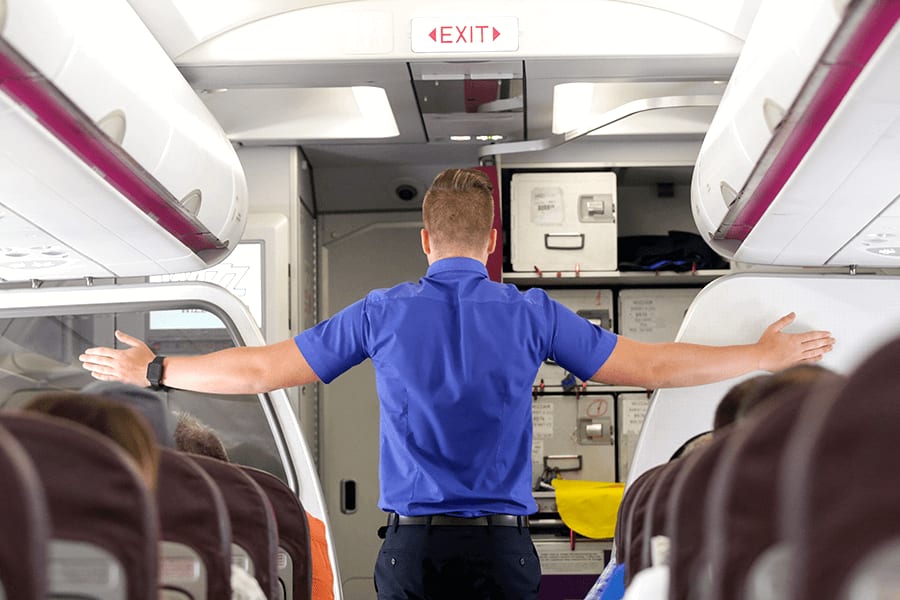
Air safety is about more than just knowing where the nearest emergency exits are located. It’s also about maintaining correct travel posture so that you remain comfortable and pain-free, from take-off to landing.
Follow these simple tips and you’ll soar through the sky – without the soreness.
1. Pack light
If your bag is bursting at the seams, it’s probably a sign that you’ve overpacked. Even if you haven’t quite maxed out the airline’s baggage allowance, that extra pair of pants may just be the straw that breaks the proverbial camel’s back.
The problem with carrying a single heavy load is that it throws your body off balance. Try packing light or, if that’s not an option, divide your items up into two smaller suitcases and check one of them. It may cost a few extra bucks, but your back and shoulders will thank you.
2. Lift with your legs
Before you can get settled in your seat, you need to stow your bag in the overhead bin. This can be a bit of a struggle if you didn’t heed our last piece of advice. The best way to lift a heavy bag overhead is to do it in stages: first, bring it up to top-of-seat level, then raise it higher while bending at the knees. Use your leg muscles for extra leverage rather than your lower back.
3. Bring a support pillow
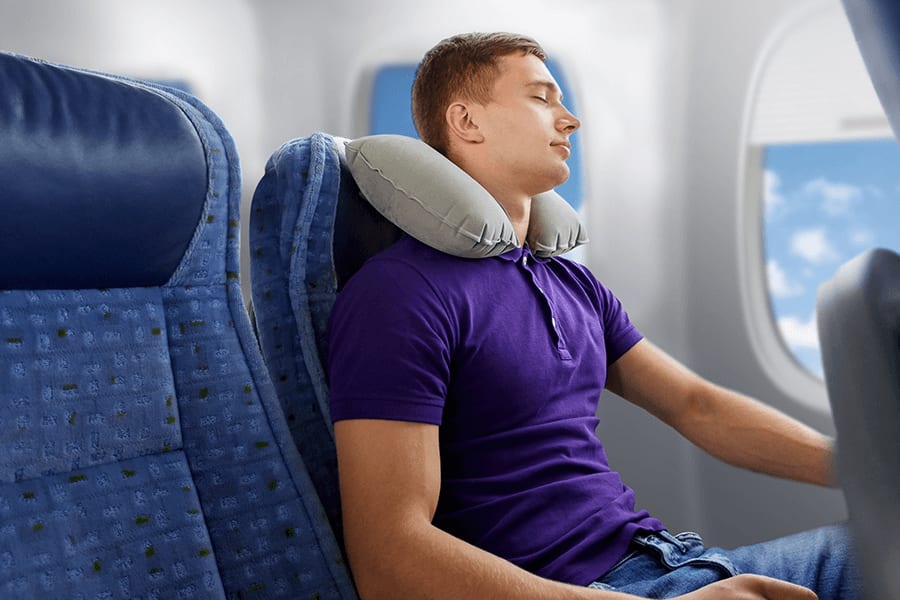
Never underestimate the power of the neck pillow! This travel essential can be a real lifesaver when trying to get some shut-eye on a long flight. It offers both comfort and support and can prevent the pain that’s caused when the cervical muscles in your neck cramp up.
Pro tip: To help maintain your spine’s natural curvature, place a lumbar support pillow in the small of your back. This will help prevent muscle fatigue and reduce pain. A rolled-up sweater will also do the trick.
4. Do in-seat exercises
Who said you can’t get your blood flowing while sitting on your butt? Performing gentle movements will engage larger muscle groups and improve circulation.
One muscle group in need of exercising is your glutes. To avoid tightness and pain caused by periods of inactivity, try clenching your butt cheeks for 5 seconds and releasing them for another 5 seconds – do this 10 times.
A good way to prevent swelling in your lower extremities is to trace the letters of the alphabet with one foot and then repeat with the other.
5. Stand/move around often
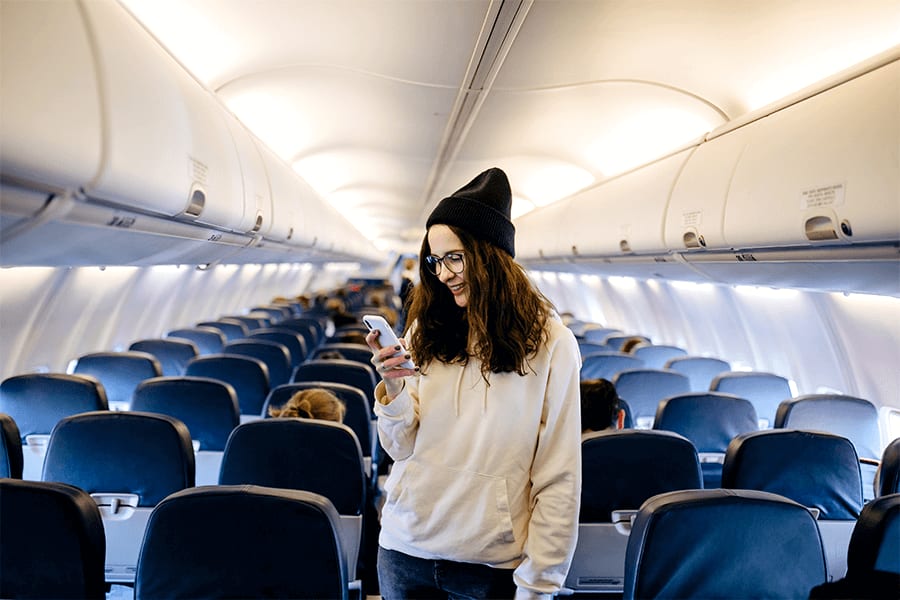
Are you one of those people who leap up from their seats the moment the fasten seatbelt sign is turned off? Yeah, we don’t blame you! If you’re lucky enough to get an aisle seat, take full advantage of your unrestricted access to the walkway. Get up, stretch your legs, pace up and down the aisle. Oh, and try to be forgiving of your fellow passengers in the middle and window seats as they clamber over you while muttering apologies.
Of course, no trip would be complete without this BONUS TIP…
6. Use a posture corrector
“Ladies and gentlemen, please return your seat backs and tray tables to an upright position.“
A smart posture trainer like the UPRIGHT GO 2 is the ideal travel companion as it weighs next to nothing, is barely visible under your clothes, and is designed for all-day wear. It works by gently vibrating every time you slouch, reminding you to correct your posture in real-time. With this tiny app-controlled device on your back, you’ll arrive at your destination looking and feeling happy, energized, and full of confidence. You are, after all, the pilot of your posture.
Grab an UPRIGHT GO 2 before you travel and start building healthier habits for the long-haul.
You Might also Like
Search
Sign up to our newsletter
Follow Us On
Popular
Revisit the GO 2/S Device Setup
How to get started
Finding your upright position
How to find your target upright posture
Calibration
Check out the UPRIGHT GO 2
